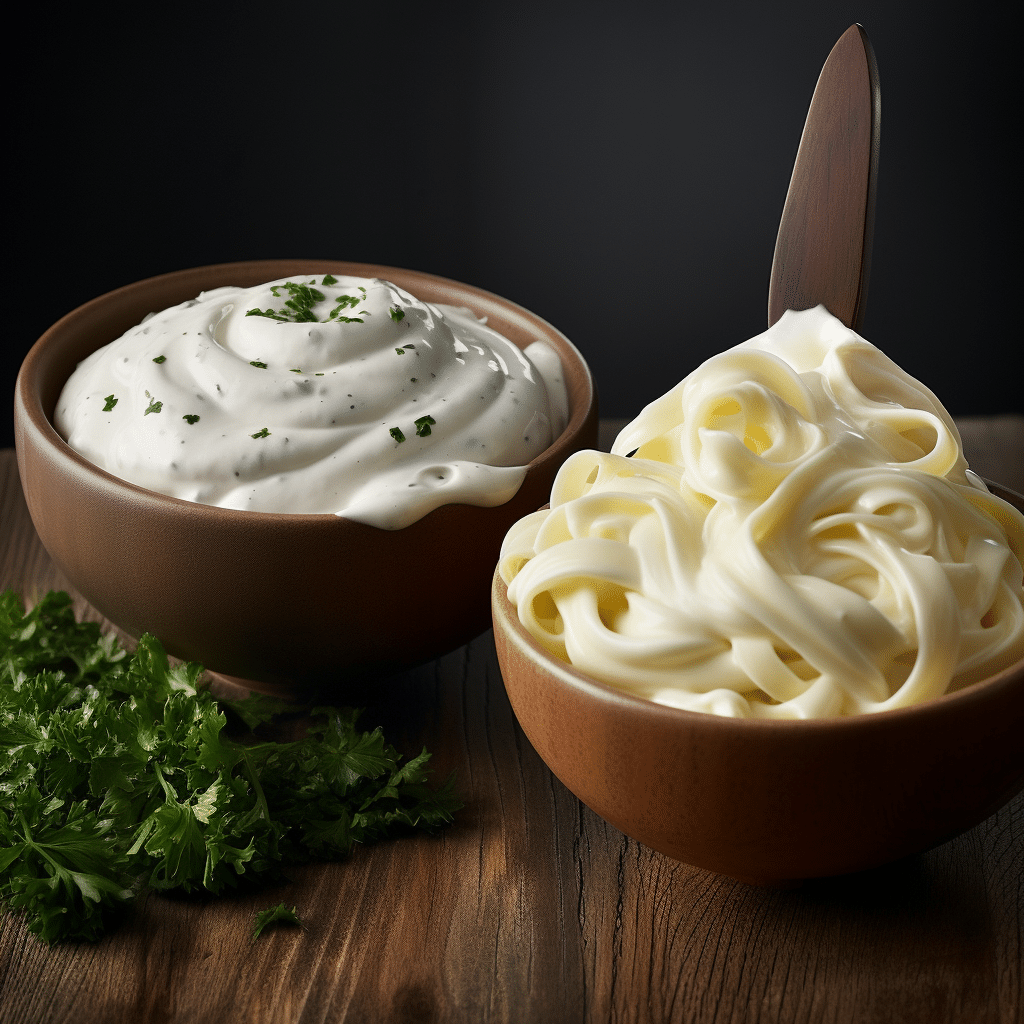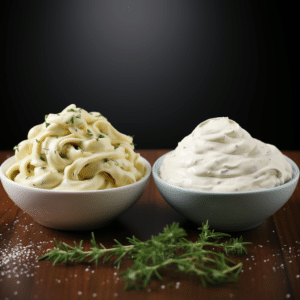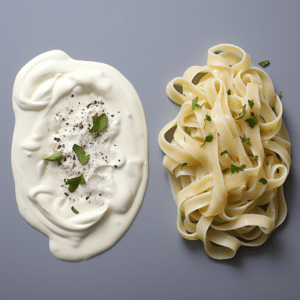
White Sauce vs. Alfredo Sauce: Differences and Uses
Pasta is a popular wheat-based food that originates in Italy. It comes in different types depending on the pasta shells used, the types of sauce used in cooking, and the amount of pasta prepared. Basically, pasta contains two ingredients, pasta shells and a specific kind of sauce to cook the shells in, which add moisture and flavor to various pasta dishes.
Different types of sauces are used for cooking pasta: tomato-based, thin, oily, thick, and creamy sauces. White and Alfredo sauce are among the two most popular pasta sauces. They are creamy, thick, and made up of dairy products. But, they are made differently and have unique uses in culinary. Here’s more to White sauce vs. Alfredo sauce.

White Sauce vs. Alfredo Sauce
White sauce, also called bechamel, is a type of sauce originating from the French. The sauce is creamy, adds flavor to numerous pasta dishes, and is prepared from milk and roux flour. White sauce is a mother of other sauces and forms the base for various French sauces.
Alfredo sauce is a type of sauce originating from Italy. The sauce is made from heavy cream, butter, and parmesan cheese. Traditionally, Alfredo sauce is prepared with fettuccini pasta to make fettuccini alfredo.
Origin
White or bechamel sauce has a French origin. This sauce is very popular in French cuisine and forms the base from which other sauces are prepared. Sauces made from the white sauce include, mornay, crème, nantua, and ecossaise sauce.
Alfredo sauce is a part of a pasta dish called alfredo fettuccini. This dish was originally prepared with pasta together with Alfredo sauce in a pan by the tableside. On the other hand, Alfredo sauce originates from Italy.
Ingredients
White sauce is simpler to make. To prepare this sauce, you’ll need equal parts of fat and flour known as a roux. The roux flour is mixed with milk and heated, making the sauce have a thick consistency. You can adjust the flour to achieve your desired sauce consistency. Note that some White sauce recipes may call for seasonings like salt or nutmeg.
As for Alfredo sauce, this one is a bit complex and needs more skills than White sauce. Alfredo sauce is prepared from cream, butter, and parmesan cheese. Some people opt to add more ingredients to thicken the sauce and enhance its flavor. Such ingredients may include seasonings, cream cheese, pepper, salt, and garlic.
Preparation
White sauce is cooked separately in a pan. It’s then added to the cooked pasta or other foods. This sauce is not prepared in the same pan as the pasta.
In the traditional settings, Alfredo sauce is mixed and cooked with fettuccini pasta in the same pan. As the sauce thickens, it coats the pasta. Now, Alfredo sauce can be prepared separately and is available in grocery stores and supermarkets as condiments. Therefore, you can just add it to the dish you’re making and don’t have to cook it in the same pan as your other food.
Culinary Uses
White sauce, popular in French cuisine, can be used in various pasta dishes. For example, lasagne, souffles, and mac and cheese. Besides using it in different pasta dishes, White sauce can be used to prepare other types of sauces.
Alfredo sauce is a crucial component of the fettuccini alfredo pasta dish. This sauce coats the pasta, giving it a creamy coat. Alfredo sauce can also add rich, creamy texture and flavor to other dishes. For instance, this sauce can be used in other pasta dishes or casseroles.
Nutritional Information
Both Alfredo and White sauce are high in calories. However, Alfredo sauce has much more calories than White sauce. The high calorie is due to its many ingredients, with each being high in calories. Butter, cream, and cheese are all high-calorie foods, explaining the high-calorie content of Alfredo sauce. So, this sauce may not work for you if you’re on a weight loss program and prefer to eat low-calorie foods.
White sauce is made from a few simple ingredients, roux flour, and milk. This makes it have a low-calorie content, making it ideal for individuals conscious of their calorie intake.
Moreover, Alfredo sauce is high in fats and cholesterol than White sauce, especially saturated fats. Again, the ingredients used to make Alfredo sauce are fats, impacting its high-fat content. For this reason, Alfredo sauce may not be the best sauce for people suffering from high cholesterol, heart diseases, or those on low-fat diets.
White sauce is low in fats, thanks to the roux flour and milk used to prepare it. It’s, therefore, a better option for anyone on a low-fat diet.
What’s more, Alfredo sauce is very high in sodium compared to White sauce. A 100 g of Alfredo sauce provides around 2590 mg of sodium, while the same 100 g of White sauce provides 328 mg of sodium. The sodium could be due to the cheese or seasonings used during preparation.
Other Types Of Italian Pasta Sauces
Tomato-Based Sauces
Tomato-based sauces are also called marinara sauces. These sauces are prepared by crushing or dicing tomatoes with chopped onions, garlic, and peppers. The ingredients are simmered until they attain a saucy consistency. Tomato-based sauces can be:
Arrabbiata sauce: made using marinara sauce and crushed red peppers or chili peppers.
Bolognese sauce: made with chopped cooked meats, vegetables, and chili peppers.
Wine-Based Sauce
This sauce is made from Spanish wine, heavy cream, marsala, and parmesan cheese.
Cream-Based Sauces
These sauces are the richest as they contain butter, heavy cream, and cheese. Examples include Alfredo and Carbonara sauce.
No-Cook Pasta Sauce
Pesto, a pasta sauce made from crushed European pine nuts, garlic, and basil blended with olive oil, doesn’t require cooking as the heat from cooked pasta is enough to soften it and enhance its flavor.

Conclusion
White sauce is a French-originating pasta sauce made from milk and roux flour. This sauce can be used in pasta dishes or as a base to make other sauces.
Alfredo sauce is an Italian-originating sauce made from butter, cream, and cheese. This sauce makes fettuccini alfredo pasta, casseroles, and other pasta dishes.